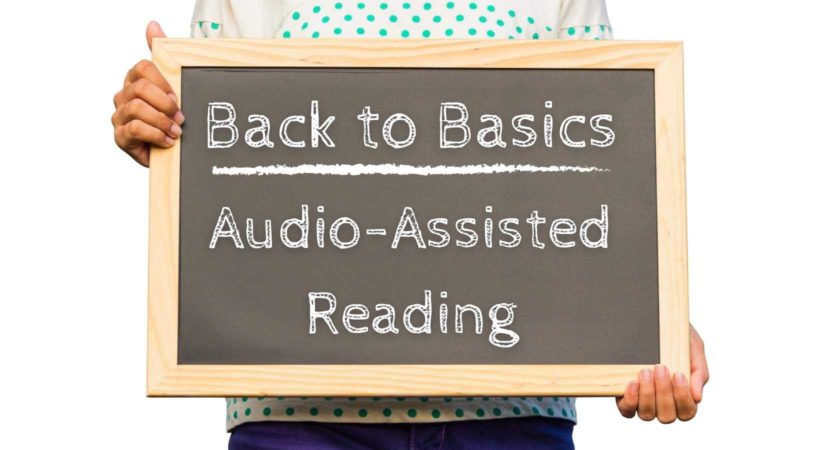
Back to Basics: Audio-Assisted Reading
Welcome to our Back to Basics series! In this series we explore some of the foundational methods, practices and terminology for teaching reading and writing. This series is for those new to the field of literacy, beginning tutors or those who would just like a refresher. This week we discuss audio-assisted reading.
Audio-assisted reading is a practice that has been used in literacy learning for many years. Tutors record (or use pre-recorded) texts being read by an accomplished reader, often at a slow pace. While these readings can be used in person, they are also a great tool for distance teaching. Learners can practice with the tutor present, or on their own.
Audio-assisted reading activities offer several benefits:
- Helps with the development of vocabulary
- Hearing an experienced reader model fluent reading demonstrates accuracy, pronunciation, pace, expression and phrasing
- Improves sight word recognition
- Gives learners access to more difficult material than they might otherwise be able to read, allowing them to focus on meaning and comprehension
- Helps to increase fluency
“Audio-assisted reading continues to have huge benefits for readers across all year levels – especially those who are struggling or learning the English language. It’s a literacy boost that supports the development of reading fluency and comprehension.” – Meryl-Lynn Pluck
How to Use Audio-Assisted Reading
Reading Rockets suggests five steps for successfully using audio-assisted reading:
- Choose a reading passage and audio recording of the reading that is slightly above the learner’s independent reading levels.
- Ask the learner to listen to the audio while following along on the paper copy of the passage.
- Have the learner read along out loud with the audio recording.
- Ask the learner to read the passage without the audio.
- Have the learner read and re-read along with the audio until they feel comfortable reading the text unassisted.
Research has shown that audio-assisted reading is a great tool to enhance and complement other comprehension and reading strategies. To learn more and use examples of recorded readings, see the links below.
Resources
- Audio-Assisted Reading (adaptable for adults)
- Developing Word Knowledge Within Tape Assisted and/or Other Audio Recorded Reading Programmes
- The effects of listening while reading and repeated reading on the reading fluency of adult learners
- Listen up! Audio texts and how they enhance literacy
- Reading While Listening: Improving Struggling Adolescent Readers’ Comprehension Through the Use of Digital Audio Recordings
- The Research Base of Audio-facilitated Reading
Readers with Audio
- CommonLit Library (free access with account)
- ESL Bits
- ESL Literacy Readers
- Lit2Go
- News in Levels
- Reading Skills For Today’s Adults
- The Westcoast Reader
Related Blog Posts
Adult Literacy Education Journal – new issue!
The fall edition of the Adult Literacy Education: The International Journal of Literacy, Language, and Numeracy is available now! Published by ProLiteracy, this issue contains the following articles: Research The …
Order of Adjectives
When there’s more than one adjective before a noun, which one comes first? Do you know why?
Back to Basics: Sentence Structure
Welcome to our Back to Basics series! This week we discuss teaching sentence structure.
